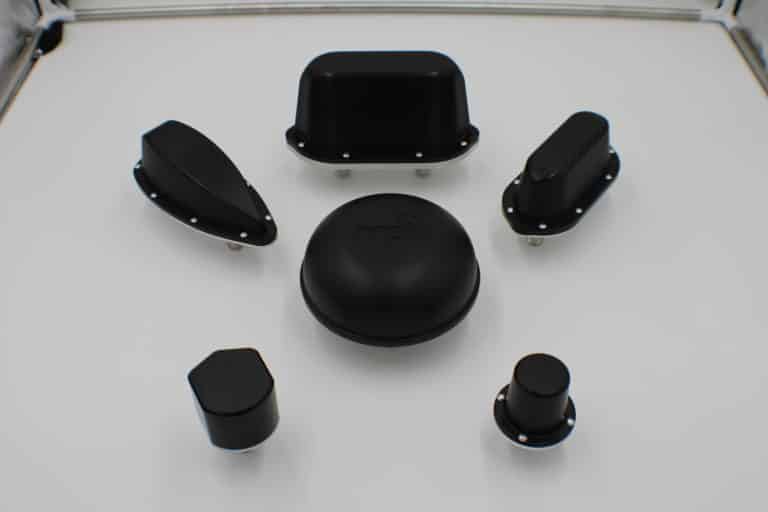
Antenna selection matters more than you might think. If you choose the wrong type of antenna to use with your communications equipment, you might not be able to send or receive signals when it matters most. Even if the antenna works, it might not provide the performance and reliability that you need. Antennas can also detach from surfaces or fail because they’re not built to withstand the physical environment. There’s a lot to think about during antenna selection, but here are some key considerations.
Frequencies and Technologies
Antennas are designed to work best over a band, or range, of frequencies. For example, very high frequency (VHF) signals can be divided into low-band (49 to 108 MHz) and high-band (169 to 216 MHz). If you want to send or receive signals that are outside of an antenna’s specified band, you probably won’t get the best performance. In some cases, such as with a cellular signal and a VHF antenna, the technologies are so different that the antenna won’t be able to pick-up the signal at all.
Gain and Radiation Patterns
Gain is an antenna specification that describes the amount of power transmitted in a specific direction. More power might sound good, but higher gain isn’t necessarily better. As gain increases, an antenna’s radiation pattern becomes flatter and longer. That’s fine for two-way mobile radio communications across the plains of Kansas, but a high-gain antenna might not be the best choice for the mountains of Colorado or in an urban environment like Denver, where tall buildings represent line of sight (LOS) obstructions.
Mounting Styles
Mounts are accessories that hold antennas in place and support them. During antenna selection, it’s important to determine whether a mount is included or sold separately. There are various mounting styles, but some use magnets and others use fasteners. Magnetically mounted antennas don’t require drilled holes, but they can detach from vehicles, equipment, or masts. Fasteners provide more durable attachment and can be designed for either temporary or permanent use.
Physical Environments
Finally, some antennas are designed for indoor applications while others are designed for outdoor use. Typically, outdoor antennas have a housing that keeps out contaminants. Some even meet specific ingress protection (IP) standards for dust and water. Not all outdoor antennas are built the same, however. For applications such as mining, it’s important to select an outdoor antenna that is also ruggedized. Otherwise, debris can damage the antenna’s housing and interfere with performance.
Quality and Performance
MP Antenna designs and manufactures antennas at our Made in USA facility in Elyria, Ohio. All of our antennas are multi-polarized, and they’re tested under real-world conditions. Products include VHF antennas, cellular antennas, ruggedized mining antennas and many other American-made solutions. Visit the Products section of our website for a complete selection, or request an online quote.
